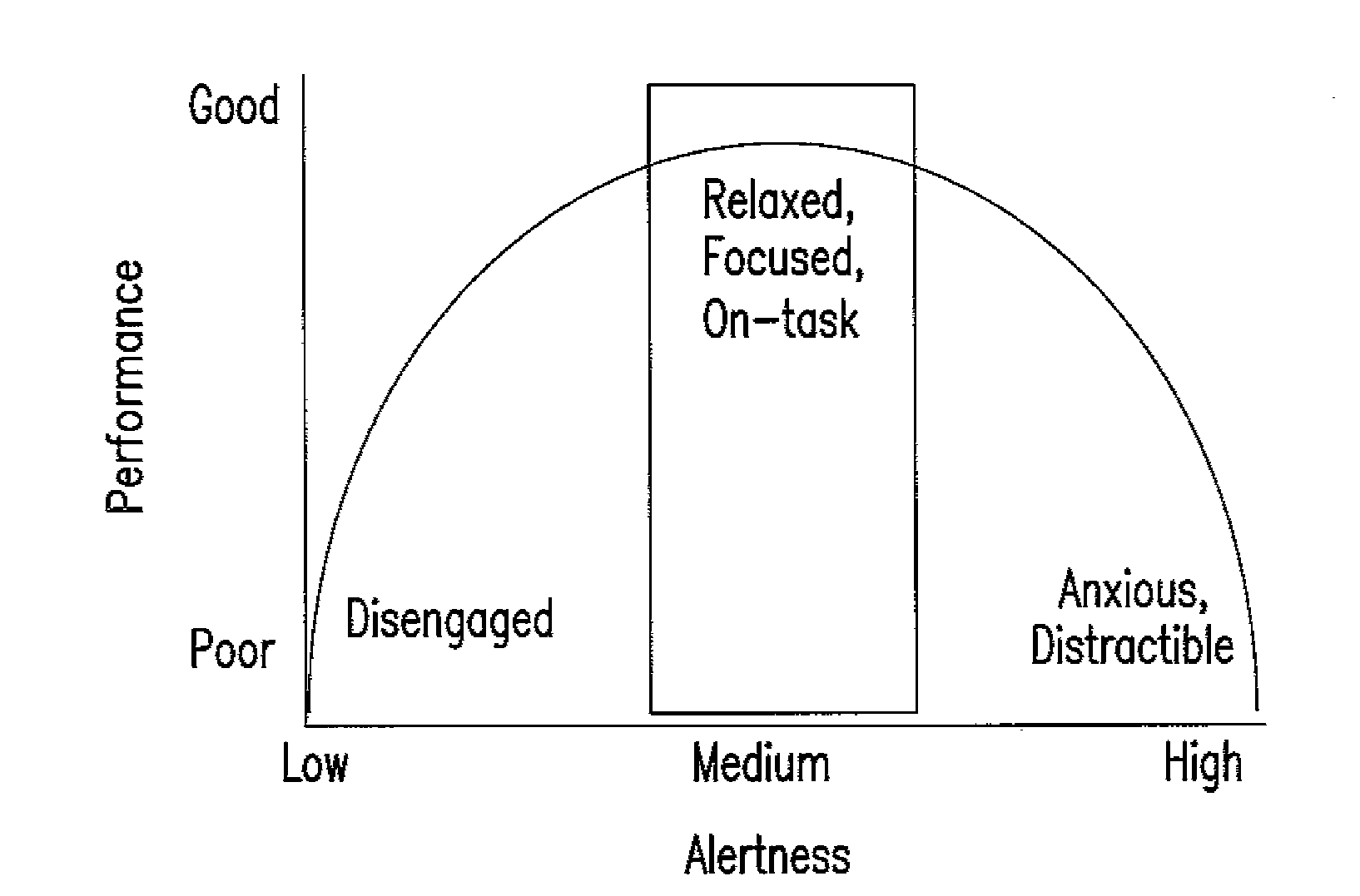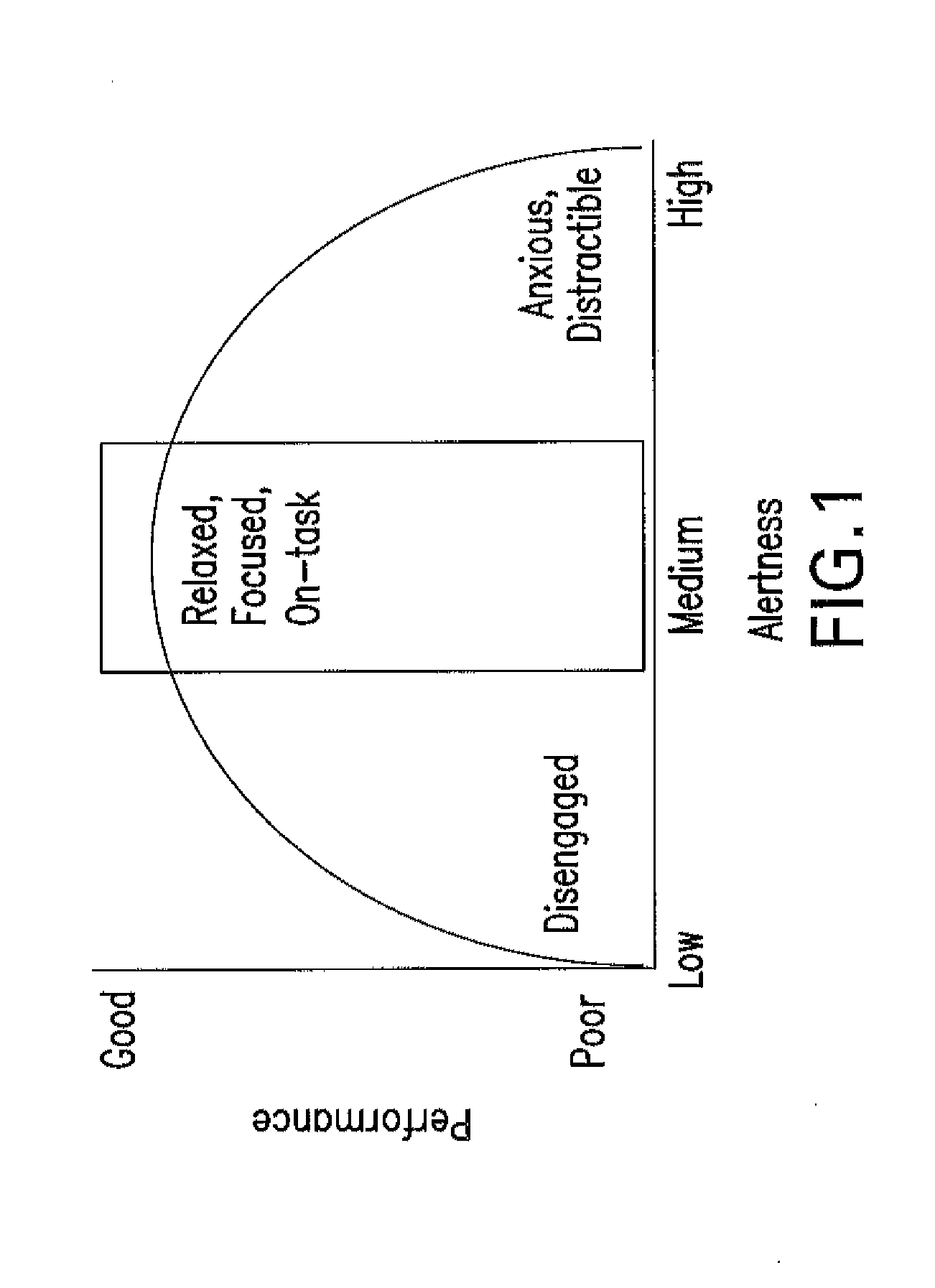Computer-implemented interactive behavioral training technique for the optimization of attention or remediation of disorders of attention
a behavioral training and computer-implemented technology, applied in the field of computer-implemented interactive behavioral training system, can solve the problems of increasing distractibility, poor cognitive performance, and high alertness state, and achieve the effect of enhancing the attentional state of the participan
- Summary
- Abstract
- Description
- Claims
- Application Information
AI Technical Summary
Benefits of technology
Problems solved by technology
Method used
Image
Examples
example 1
[0140]Tonic and Phasic Attention Training (TAPAT) Improves Attention in Hemispatial Neglect
[0141]For hemispatial neglect, a debilitating stroke disorder in which patients do not attend to information on the opposite side of space as their brain lesion, we developed a version of the interactive behavioral training task that patients could perform with a moderate amount of success. Patients performed 3, 12-minute blocks of the training task that we named ‘Tonic and Phasic Alertness Training’ or TAPAT (because it trains both moment-to-moment and extended aspects of alertness, DeGutis & VanVleet, 2010) once a day for 9-days. The session began with patients familiarizing themselves with the target scene (see FIG. 7) and reading the following instructions: “You will see many scenes over the next 12 minutes. Your job is to hit the spacebar as fast as you can for each scene except when the scene is the target scene. When you see the target scene, don't hit the spacebar.” In each block, cent...
example 2
[0149]Cross-Training in hemispatial neglect: auditory tonic and phasic attention training improves visual attention.
[0150]In a follow-up experiment, we tested whether the training-related effects in neglect patients from example 1 would replicate if the training task stimuli were from the auditory modality (Van Vleet and DeGutis, submitted). If so, this suggests that the mechanism of training is from enhancing an individual's, attentional state rather than training any sensory-specific skill. Specifically, 8 neglect patients trained to identify a target tone amongst distractor tones for 9 days. FIG. 11 shows that patients' spatial and temporal attention improved after auditory training, with the greatest improvement reflected in patients' most impaired portion of space-time.
example 3
[0151]TAPAT Improves Cognition In Older Adults
[0152]An additional study in a group of 14 senior citizen participants (mean age=79), 4 hours of TAPAT training over 9 days (24 min / day) produced significant improvements in sensitive outcome measures of attention, working memory, and executive function compared to an active control group (Van Vleet et al, in prep). As discussed above, to push the limits of perceptual resolution and working memory, all characters were presented rapidly at central fixation: two target numbers embedded in a serial stream of 14 letters. Each character was presented on the screen for 80 ms with a 20 ms inter-stimulus interval (see FIG. 12). Prior to TAPAT participants demonstrated significantly impaired discrimination accuracy for the second target, consistent with earlier reports. Poor second target accuracy has been attributed to the refractory period that follows a phasic burst in LC activity associated with correct discrimination of the first target (nor...
PUM
 Login to View More
Login to View More Abstract
Description
Claims
Application Information
 Login to View More
Login to View More - R&D
- Intellectual Property
- Life Sciences
- Materials
- Tech Scout
- Unparalleled Data Quality
- Higher Quality Content
- 60% Fewer Hallucinations
Browse by: Latest US Patents, China's latest patents, Technical Efficacy Thesaurus, Application Domain, Technology Topic, Popular Technical Reports.
© 2025 PatSnap. All rights reserved.Legal|Privacy policy|Modern Slavery Act Transparency Statement|Sitemap|About US| Contact US: help@patsnap.com



